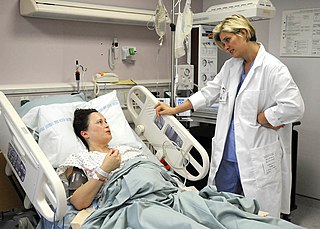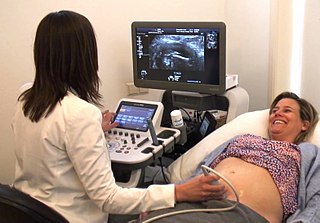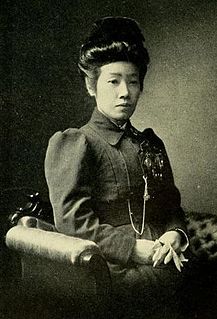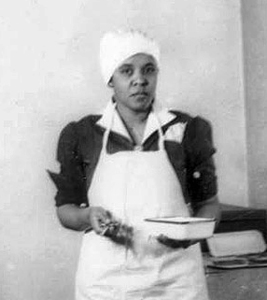History

Care of the sick in Japan was primarily done in the home by untrained family members until the end of the nineteenth century. Nursing first emerged in Tokyo in 1869, when the Tokyo Imperial University opened a small school for nurses. Little training was given in how to care for the sick, but students were instructed in hygiene and sanitary conditions for hospitals. In 1883, foreign missionaries opened two small nursing schools, based on Western models to give theoretical training to nurses. Two years later, a doctor opened a school in Kyoto and the Canadian Episcopal Mission began a school in Kobe. [1] The Kyoto school was begun by Linda Richards, who was sent by the American Board of Missions to organize a training school at the Doshisha Hospital. The first class of four nurses graduated in 1888. [2]
In 1887, the Japanese Red Cross (JRC) was founded [3] and by 1890 had begun teaching and recruiting nurses for training. [4] Though their nurses were still studying when the Sino Japanese War broke out, the JRC decided to send trainees to help with relief efforts. From 1894, [5] JRC Nurses served in numerous conflicts helping with the wounded, including in the Boxer Rebellion (1900), the Russo-Japanese War (1904), [6] World War I and the Japanese intervention in Siberia (1919). [7] The JRC Nurses' training program required three years of study with the first year dedicated to theory, including courses on anatomy, bandaging, disinfection, hygiene, instruments, women’s health, obstetrics, as well as basic assistance of surgery and health treatment and the latter two years involved in practical training. [8] Completion of the course required a final examination before diplomas were given and additional six months of training could qualify nurse candidates as head nurses. [4] Because the JRC was under government control, their hospitals spread to all the major cities and a uniformity of training made the organization a leader in nursing development. [9]
Nursing was not an established part of Japan's health care system until 1899 with the adoption of the Midwives Ordinance. The Registered Nurse Ordinance was passed in 1915 which established a legal substantiation to registered nurses all over Japan. [10] In the 1920s, the government began investigating the need to increase the educational requirements for nurses. Up to that time, job training was the only requirement and there was no prerequisite for a high school education to enter training at most hospitals. In 1927, St. Luke's International Hospital became the first college of nursing in the country and based its training program on the one offered at Yale University in New Haven, Connecticut. [9] The program required students to be graduates of a Government High School, complete three years of standard training, and a fourth year of specialization. [11]
The first nursing association in Japan was founded in 1929 by Take Hagiwara as the Nursing Association of the Japanese Empire. [7] By 1933, the organization had around 1500 members from throughout Japan [12] and joined the International Council of Nurses (ICN). [13] During World War II the Public Health Nurse Ordinance (1941) and National Medical Care Act (1942) were passed and re-affirmed in 1948 with passage of the Public Health Nurses, Midwives and Nurses Act. It established educational requirements, standards and licensure. [10] In 1946, the Japanese Nursing Association was created, merging the Japanese Midwife Society, Japanese Public Health Nurses Association and the Nursing Association of the Japanese Empire into one umbrella organization. [14]
There has been a continued effort to improve nursing in Japan. In 1952 the first university courses on nursing were introduced, 1957 requirements for assistant nurses were introduced, in 1965 regulations were passed for nurses working night-shifts, and throughout the 1990s several legislative acts expanded training and employment protections for nurses. [10] In 1992, the Law for Securing Nursing Personnel created new university programs to address the aging population of Japan, establish a critical scientifically based approach to training rather than a pragmatic one, unify training and licensing requirements and overall improve the image of the field. [15] In 2009, the Public Health Nurses, Midwives and Nurses Act was amended allowing those who had graduated from a 4-year college to be eligible to take the nursing examination, revising course requirements, and making newly graduated training mandatory for nursing personnel. [10]









